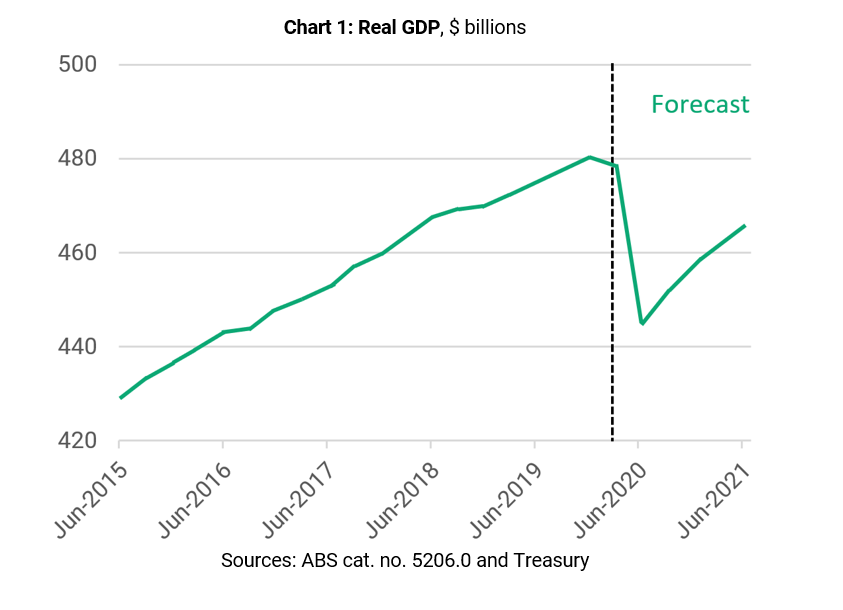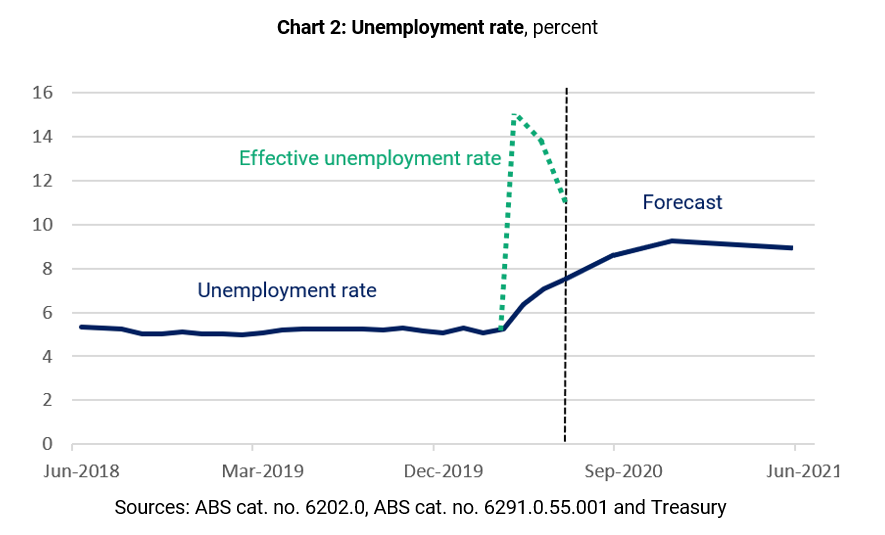The Federal Treasurer announced a mid-year update on the state of our
national economy. While the update focused on Australia’s economic and
fiscal outlook, it built on a number of recent policy announcement relevant
to the private capital industry.
The key recent policy announcement relevant to the private capital industry
are:
- Extension of JobKeeper payments
by six months to 28 March 2021, including a two-tiered payment system to be introduced on 28 September to align the payment with employees’ pre-COVID
incomes;
- Jobs and Skills programs including additional low and no
fee training places for apprentices and school leavers and a higher
education relief package to help fill skills gaps;
- SME Guarantee Scheme to support up to $40 billion of
lending to SMEs, with loans up to $1 million; and
- Priority Infrastructure projects: 15 major
infrastructure projects will be fast-tracked and are estimated to be worth
$72 million in public and private sector investment.
Further details on these policies is provided below.
The key fiscal and economic updates provided by the Treasurer and Finance
Minister are:
- Real GDP is expected to fall by 3.75 per cent in 2020
then grow by 2.5 per cent in 2021. A 7 per cent drop in real GDP is
expected in the June quarter. In contrast, global GDP is predicted to
contract by 4.75 per cent in 2020 then grow by 5 per cent in 2021;

-
$85.8 billion and $184.5 billion deficits are forecast for 2019-20 and
2020-21
, respectively. This is on the back of falls in tax receipts of $31.7
billion and $63.9 billion in 2019-20 and 2020-21, respectively, and the
$289 billion (14.6 per cent of GDP) government stimulus spending;
-
Net debt is expected to reach 24.6 per cent and 35.7 per cent of GDP in
2019-20 and 2020-21
, respectively. Australia’s new debt position remain significantly below
that of our major trading partners and the G20 average. Australia’s AAA credit rating has been reaffirmed by all
three major credit rating agencies; and
- Australia’s unemployment rate is expected to peak at 9.25 per cent.
The effective unemployment rate, which takes account reductions in working
hours and labour participation, reached almost 15 per cent in April 2020
and has started to fall, reaching almost 11 per cent in June 2020, buoyed
by an increased in working hours.

The Government will release its delayed Federal Budget in October this
year. The Council is preparing a pre-budget submission, which will build on
our recent advocacy work and political engagements, to reflect our
industry’s key priorities.
Extension of JobKeeper Payments
On 21 July, the government
announced
that JobKeeper would be extended by six months to 28 March 2021 and the
temporary Coronavirus Supplement for those on income support will be
extended until 31 December 2020.
From 28 September 2020, businesses, and not-for-profits will be required to
reassess their eligibility through their actual June and September quarter turnovers to demonstrate that they
have experienced an ongoing significant decline in turnover. Organisations will need to demonstrate the relevant decline in
turnover in both of those quarters to be eligible for the JobKeeper Payment
in the December quarter.
Employers will need to again reassess their eligibility for the JobKeeper
Payment for the March quarter. Employers will need to demonstrate that they
have met the relevant decline in actual turnover in each of the previous
three quarters ending on 31 December 2020 to remain eligible for the
JobKeeper Payment in the March quarter 2021.
If the turnover test in the extension period is not met, this does not
affect their eligibility prior to 28 September 2020. The continuation of
JobKeeper for eligible businesses is aimed to support the economic recovery
and provide them with sufficient time to adjust.
The JobKeeper Payment will continue to remain open to new participants that
meet the eligibility requirements.
A two-tiered payment will also be introduced from 28 September, to align
the payment with the incomes of employees before the onset of the COVID-19
pandemic. Employees who were employed for less than 20 hours a week on
average in the four weekly pay periods ending before 1 March 2020 will
receive the lower payment rate.
JobKeeper Payment rates from 28 September 2020 to 28 March 2021
|
Date
|
Full rate per fortnight
|
Less than 20hrs worked per fortnight
|
|
28 September 2020 to 3 January 2021
|
$1,200
|
$750
|
|
4 January 2021 to 28 March 2021
|
$1,000
|
$650
|
Expanding skills and creating jobs
On 16 July 2020, the Government
announced
a $2 billion skills package. The package includes:
- the establishment of a $1 billion JobTrainer Fund (jointly funded by state
and territory governments), to provide additional low and no fee training
places for job seekers and school leavers. The JobTrainer fund aims to
provide for around 340,700 additional training places to help school
leavers and job seekers; and
- an expansion of the Supporting Apprentices and Trainees wage subsidy for
a further 6 months to 31 March 2021 and also expanded to include
medium-sized businesses from 1 July 2020.
Eligibility has also been expanded. From 1 July 2020 to 31 March 2021, the
subsidy will be available for SMEs with fewer than 200 employees (up from
20 employees), including those using a Group Training Organisation. The
subsidy will still cover 20 per cent of the apprentice’s or trainee’s wage,
up to a cap of $7,000 per quarter.
Expansion of SME Guarantee Scheme
On 20 July 2020, the Government announced the
expansion
of the Coronavirus SME Guarantee scheme
.
Key changes to the Scheme include:
· Extending the purpose of loans able to be provided beyond working
capital, such that a wider range of investment can be funded;
· Permitting secured lending (excluding commercial or residential
property);
· Increasing the maximum loan size to $1 million (from $250,000) per
borrower;
· Increasing the maximum loan term to five years (from three years); and
· Allowing lenders the discretion to offer a repayment holiday period.
The initial phase of the Scheme remains available for new loans made by
participating lenders until 30 September 2020. The second phase of the
Scheme will start on 1 October 2020 and will be available for loans made
until 30 June 2021.
Priority infrastructure Projects
The Prime Minister recently
announced
that 15 major infrastructure projects would be fast-tracked under a
bilateral model between the Commonwealth, states and territories.
These projects are estimated to be worth more than $72 million in public
and private investment and include:
· Inland Rail from Melbourne to Brisbane;
· Marinus Link between Tasmania and Victoria;
· Olympic Dam extension in South Australia;
· Emergency town water projects in New South Wales; and
· Road, rail and iron ore projects in Western Australia.
The Government has committed to reduce assessment and halve approval times
for major products from an average of 3.5 years to 21 months.
Infrastructure is one of seven key policy areas imperative to reigniting
Australia’s economy which are identified in the Council’s recent
Roadmap to Recovery: Creating a Stronger and More Dynamic Economy
report.